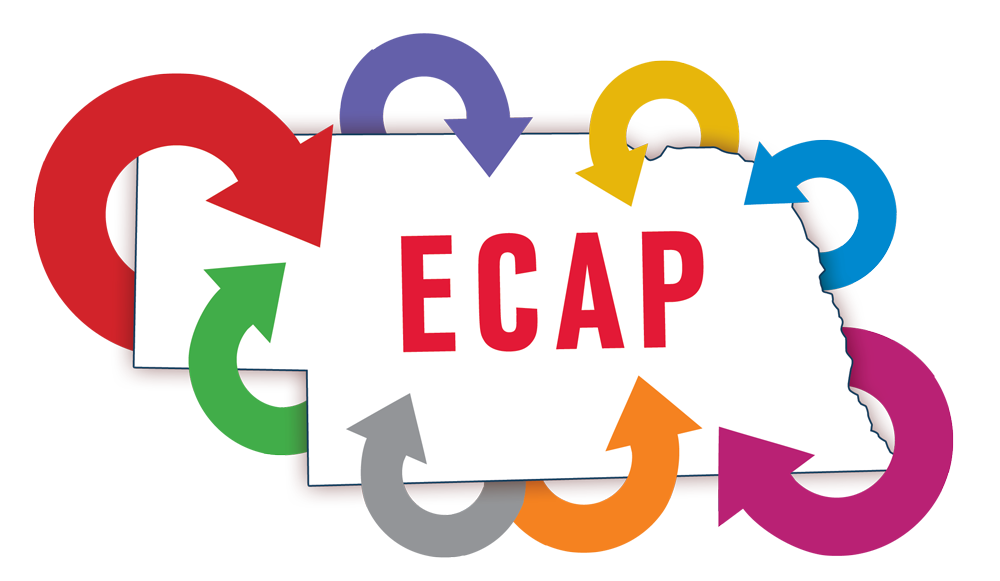2: Evaluating Community Readiness
ECAP helps build social capital within the community which in turn will strengthen your community’s readiness to address complex situations.
How does ECAP build social capital?
- Conversations bring together people from various organizations and backgrounds
- Identification of resources and assets help to link to additional networks
Assessing the readiness of a community will help to identify additional steps that may need to be taken to make the process a success.
In determining the kind of planning process a community is willing to undertake, it is important to consider readiness on a continuum. Readiness should be considered to determine the community’s current capacity and make sure assistance is available, if capacity is lacking, to help the community experience and sustain a community improvement agenda that fulfills their own aspirations and produces recognizable and meaningful results.
Source:
- Community Readiness for Systemic Change By Milan Wall, Co-Director, Heartland Center for Leadership Development Prepared for the Wealth Creation and Rural Livelihoods Conference.
- Wall, M. (2011). Community Readiness for Systematic Change. Heartland Center for Leadership Development. [JJ1]
 An ECAP readiness tool has been developed to help measure the overall level of community support and engagement.
An ECAP readiness tool has been developed to help measure the overall level of community support and engagement.
The ECAP readiness tool is designed to have a conversation with key community informants that are interested in bringing ECAP to the community. The tool looks closely at five dimensions of readiness:
- Community knowledge of efforts
- Leadership
- Community climate (attitudes and dynamics)
- Knowledge about community and economic development
- Resources for community and economic development efforts
How to use the tool?
- Gather a group of individuals interested in moving the ECAP process forward.
- Individually complete the readiness tool.
- Talk together about the results and determine if the community is in a position to move forward.
Community Readiness Background
- The degree to which a community is prepared to move forward is their level of readiness.Several models have been developed nationally to help communities determine their level of support and engagement for taking action.
Community Readiness for Community Change
- One model, developed by Colorado State University (CSU), identified dimensions and levels of community readiness. The six dimensions that influence a community's preparedness to take action:
- Efforts (programs, activities, policies)
- Community knowledge of efforts
- Leadership (appointed and influential community members)
- Community climate (prevailing attitudes and dynamics among community members)
- Community knoweldge about the issue
- Resources (people, money, time and space)
The CSU model identifies nine stages of readiness in addressing a community issue:
- No awareness: the community does not generallly recognize the issue as a problem.
- Denial/resistance: some community members recognize the issue as a concern, but there is little to no recognition of it being a local proglem.
- Vague awareness: most in the community feel the issue is a local concern, but there is no immediate motivation to address it.
- Preplanning: clear recognition by the community that something must be done about the issue, and there may even be a group addressing it, but these efforts are not focused or detailed.
- Preparation: active leaders begin planning in earnest; the community offers modest support to the efforts.
- Initiation: the community takes action, because enough information exists to justify their efforts.
- Stabilization: community leaders support activities.
- Confirmation/expansion: efforts are in place, and community members feel comfortable using services and support the expansion of services. The acquisition of local data regularly occurs.
- High level of community ownership: detailed and sophisticated knowledge about the prevalence, causes, and consequences of an issue exists. Effective evaluation guides new directions and application of the model to other community issues occurs.
-
Colorado State University Tri-Ethnic Center for Prevention Research. (2014). Community Readiness for Community Change. http://triethniccenter.colostate.edu/docs/CR_Handbook_8-3-15.pdf
http://triethniccenter.colostate.edu/communityReadiness_home.htm
Trautman, K., Burkhart-Kriesel, C., and Rice, T. (2012). Assessing a Community’s “Readiness”. University of Nebraska – Lincoln Extension. http://www.ianrpubs.unl.edu/sendIt/g2118.pdf
http://www.ianrpubs.unl.edu/sendIt/g2118.pdf
University of Kansas, Work Group for Community Health and Development, Community Toolbox, http://ctb.ku.edu/en